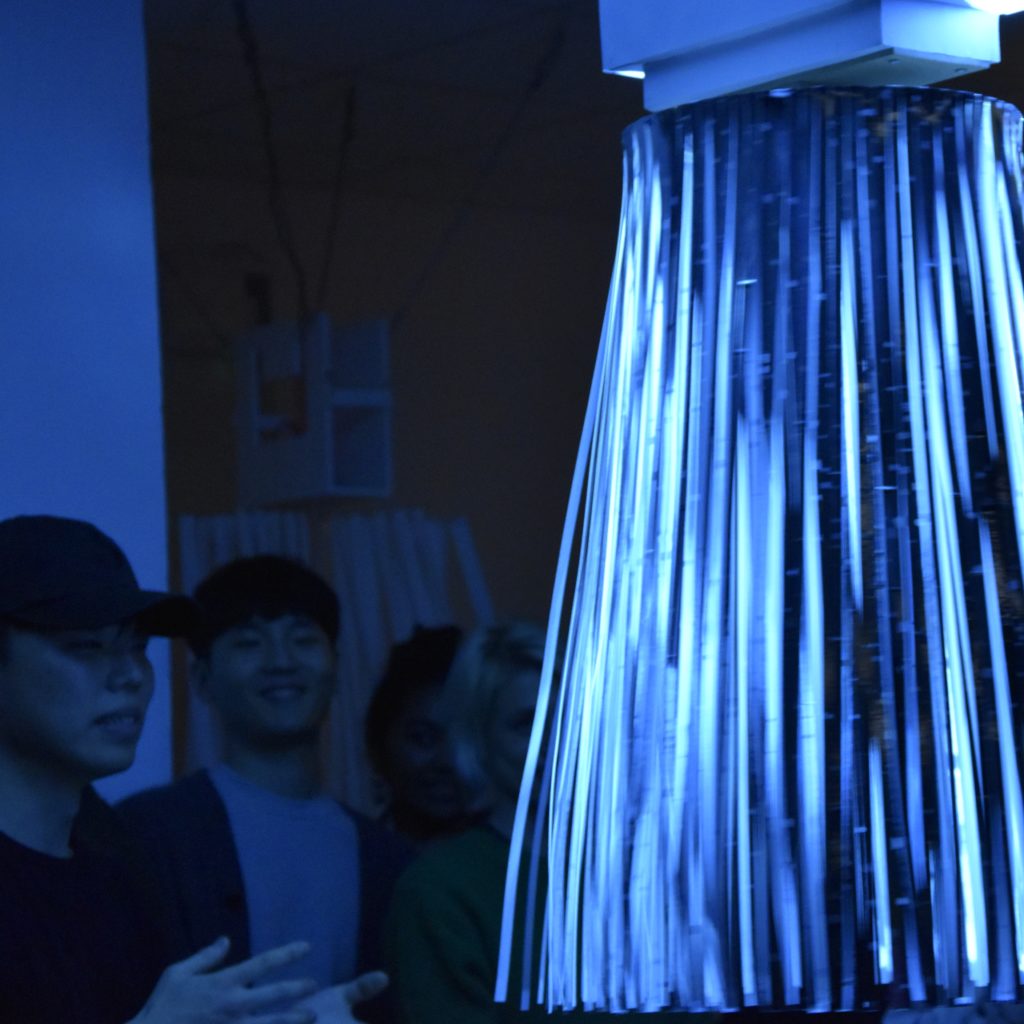Studies at Orléans School of Art and Design are organized in a three-tier curriculum, the first leads to a Bachelor of Arts in Art Studies (French DNA), the second to a Master of Arts in Plastic Expression (French DNSEP), the third to different types of degrees, including the Advanced Degree in Design Research (French DSRD).
First year
The first year is conceived as a year of guidance, shared by both specializations of the first course. It enables students to acquire basic technical, practical and theoretical skills required for the pursuit of their studies. The lessons are completely geared towards obtaining the fundamentals of design (drawing, volumes, colour, code, machines, plans, morphology, structure, photo, video, painting)
The first semester closes with a collegial assessment of the student by the teaching team, which leads to an appraisal accompanied by the number of ECTS obtained. The second semester ends with an assessment composed of a viva and the examination of a work file, which will be considered on the global quality of the presentation, its writing and iconographic research. Obtention of 60 ECTS is mandatory for passage into 2nd year, as well as the approval of a commission at the end of the school year. There is no retaking of ECTS at the end of the first year.
Second and third years
The two following years, which lead to the BA, form a block. Orléans School of Art and Design offers two main specializations: Product / Spatial Design (DOE) and Visual / Graphic Design (DVG).
These years offer students lessons articulated around mandatory projects (common core), optional projects (individual pathways), modules, mentoring in individualised projects, moments of collaborative research called ‘probes’ and professional traineeship.
The mandatory projects aim at in-depth work (80 hours per semester); The optional projects enable the students to individualise their pathway (40 hours per semester). During the last semester of 3rd year, students are requested to resume one of their already chosen projects, offering the opportunity to feed the degree project on it.
Over the course of these two years, students must choose 4th year, object design or 5th year, visual design modules. Principally composed of experimentation and exercices, the modules complete the students’ technical mastery and knowledge in a specific field. They are not a place to develop project projects but to acquire means of implementation.
The aim of the probes is to build awareness on research-creation. They must help students discover its methods, practices and ends. The probe addresses a particular (non-)methodology. Taking inspiration directly from the media theorist Marchhall McLuhan, the probe does not intend to pass on a message, but to provoke a behaviour of opening to the technological and cultural environment.
A probe does not seek to provide evidence. It is exploratory. The format of the probe feeds on its contents.
Instructed by at least two teachers, it offers a research axis linked with the students’ practices and our technological environment, such as materials, the image, play, time of creation, ecological issues, edition, vernacular design, documentary attitude, graphic design…
During the studies, students may participate in projects specifically organized in the framework of partnerships (festivals, public institutions, entreprises…). They could be involved in the organisation of the cultural programme of the school (exhibitions, fairs…). All these actions grant access to ECTS. Finally a professional traineeship is mandatory in 2nd year (3 months minimum).
The second semester of 3rd year (last semester of the curriculum) favours a personal pathway: with a tutorship by a dedicated teacher and the draft of a file, a sort of pre-dissertation supporting each student’s’ approach.The staging, the scenography and the communication of the degree are closely monitored.
The Diplôme National d’Art marks the end of the third year.

Bachelor of Arts/Diplôme National d’Art (DNA)
The DNA is recognized in the third year of studies at a BA level. It is on the French National Directory of Professional Certification. To pass, a candidate must be able to present a professional project, a selection of works carried out over the three years of study and a written file (called DNA composition). All this is defended in front of a jury composed of two external personalities and a school representative, for about 30 minutes.
The assessment criteria are:
- The quality (formal and critical) of the presentation of the works.
- The relevance of the study path and research linked to the project.
- The work contextualisation (the quality of the references and diversity of the knowledge)
- The quality of the theoretical and plastic realisations
To take the BA tests, the participant must have 165 ECTS. Furthermore, the presentation of the BA is preceded by an interview with a commission which decides, after assessment, on the student’s ability to defend their degree.
In the event of failure, any student having obtained 120 ECTS at the end of the first, four semesters is entitled to a certificate of plastic studies (CEAP) delivered by the school and certified by the French ministry of Culture.
For further information, consult the statutory text.